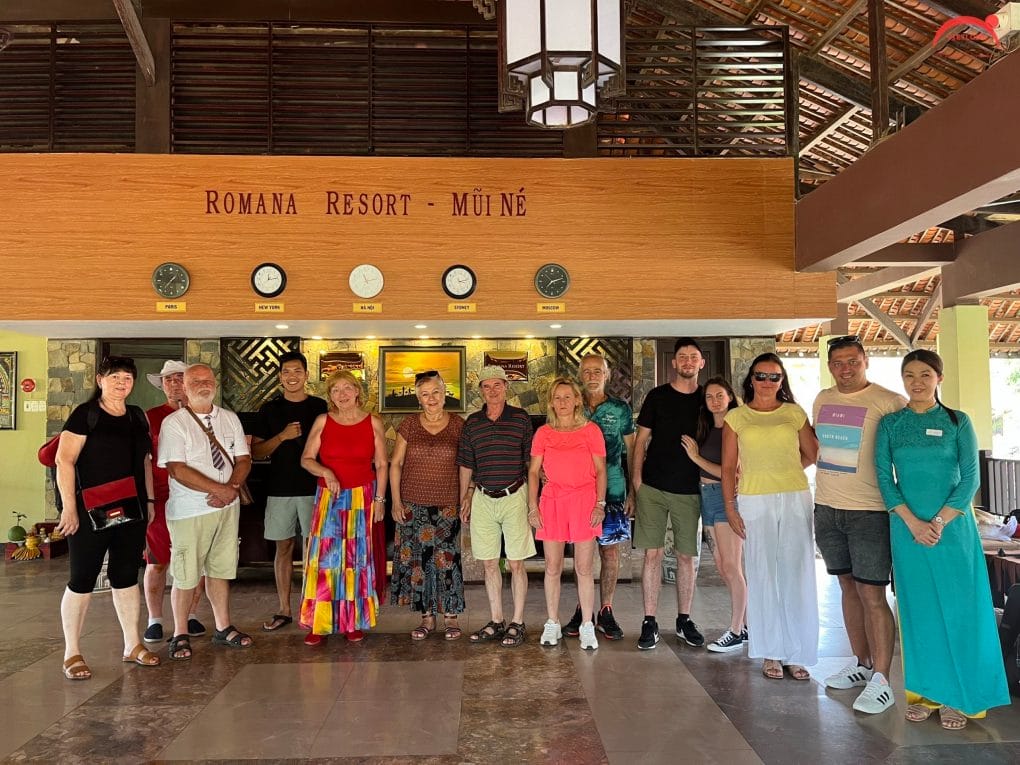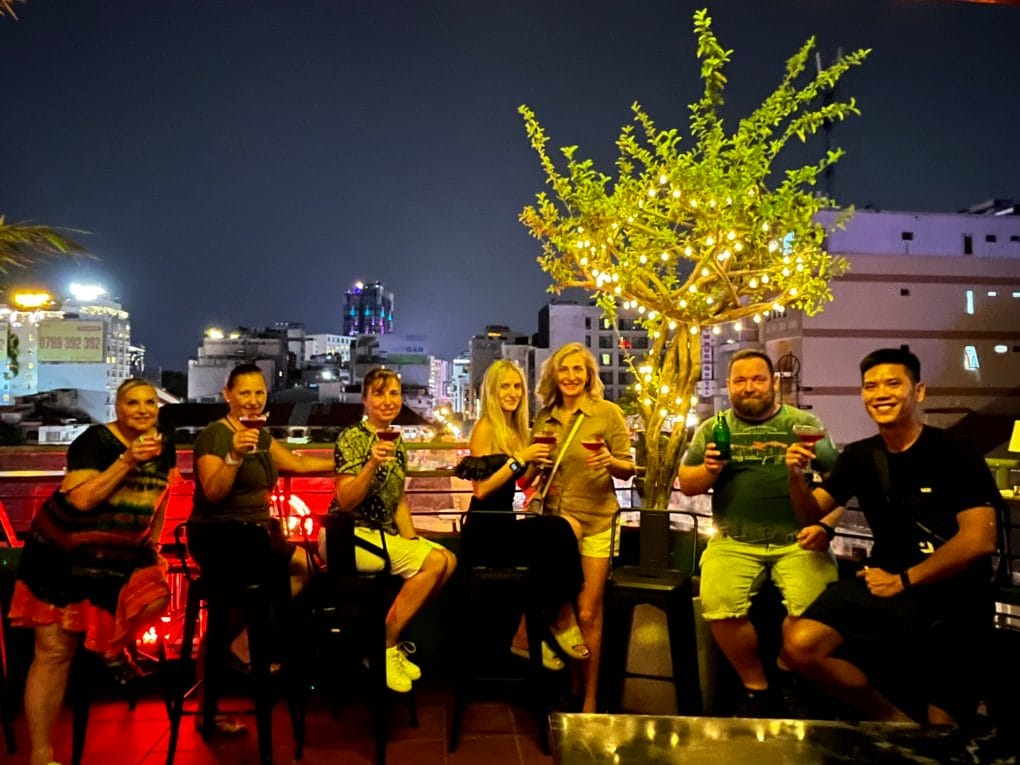Immediately to the west, the Nam Ngum reservoir is situated which delimits the park boundary. The watercourses, the Nam Xan, Nam Koui and the Nam Pa, broadly define the northern boundary of the park; however, where homesteads and agricultural land are situated between these waterways and the adjacent uplands, the foot of the hills is used instead. The Nam Thouay, from its headwaters to its mouth near Ban Pak Thouay, defines the eastern edge of the reserve. Along the south eastern edge, the 200 metre contour is used to define the protected area. In the vicinity of the lower Nam Leuk basin, this contour is again followed as closely as possible, after which the 200 metre contour is followed around the southern periphery of the reserve back to the Nam Ngum reservoir.
The western portion of the protected area is located 65 km from Vientiane by road. Driving from Vientiane, travel northwards up Route 10 until Ban Napheng at KM 54. At this village turn right along a dirt road, and travel five kilometres to the boundary checkpoint. The road climbs 9 kilometres up to the plateau, passing Tad Sang waterfalls on the way; note that the road is quite steep and rocky. Continue through the pine forests to reach Phou Khao Khouay waterfalls and the two Hmong communities of Ban Phou Khao Khouay and Ban Vang Hua. Pha Gnoy and Tad Tan are located close to Ban Vang Hua.
To get to the eastern portion of the protected area, travel along Route 13 southwards until KM 92, at Ban Palai. Turn left and drive 11 km until the reserve checkpoint. This road, commonly known as the Thabok – Muang Hom road, bisects the park in two and continues over the top of the plateau and into Long Xan District of Khet Phiset Xaisomboon (meaning the Special Zone). This route provides access to Tad Leuk, Tad Xay and the Nam Leuk reservoir.
The communities living in and within close proximity to the park may be broadly separated into two ethnic groups, with the Lao Loum living on the floodplains to the south of the reserve, while the Lao Sung communities are found to the north and west, and in the interior. Forty-nine villages have been recognized by the park authorities as being located in the community development zone/buffer zone, on the Nam Ngum floodplains and the Mekong floodplains. All but the Lao Sung communities of Ban Nam Yam situated in Thulakhom District and Ban Thakokhai in Pak Ngum District are Lao Loum communities.
To the north of the reserve, Ban Nampa and Ban Pa En are Lao Sung (Yao); Ban Sumkorn and Ban Phonlao are Lao Theung; Ban Nam Kui, Ban Phonxay, Ban Hinso, Ban Kengsan and Thamdin are Lao Sung (Hmong); Ban Phonemouang and Ban Tha Hua are Lao Loum while Ban Khonewat contains a mixture of ethnic groups. Along the shores of the Nam Ngum reservoir, the communities of Ban Don Home, Ban Paktou and Ban Khet Sam are Lao Sung (Hmong); the communities of Ban Nam Kerr and Ban Nam Ngao are Lao Sung (Yao); and the villages of Ban Huay Pong and Ban Mai are Lao Loum. Within the interior, the two large villages of Ban Phou Khao Khouay and Ban Vang Hua, together with the small communities of Ban Nam Leuk, Ban Nam Daeng, and Ban Phou Phadang are Lao Sung; while the village of Ban Phou Khao Keo is Lao Loum.
The steep, mountainous topography characterizing the area has been shaped by the uplifting and exposure of the underlying sedimentary complex. Layered sandstones are visible throughout as linear outcrops and large boulders along steep slopes, and as shelves and water-carved blocks in the incised drainage courses. There are also extensive flat uplands of exposed sandstones with little or no soil development.
Phou Khao Khouay has a monsoonal climate similar to the rest of Central Laos. It has a pronounced rainy season beginning in May and lasting through to November, the mean annual rainfall in Ban Napheng, Thulakhom District is 1936.1 mm, although it should be expected that rainfall in the uplands to be markedly higher. There is a distinct dry season during November to April. The mean annual temperature is 26.6 C; the mean maximum temperature is 31.6 C and the mean minimum temperature is 21.5 C. The wind direction is predominantly westerly during the wet season, swinging northerly during the cool season; and then changing to south and south-easterly as the hot season builds up. Annual humidity averages 73 per cent.
Upper dry evergreen forest is found throughout the central portion of the park, in the lower basins of the Nam Leuk and Nam Mang. This forest has plant families and genera typical for other parts of Southeast Asia. Commonly found species are members of the genera Dipterocarpus and Shorea. Mixed deciduous forest predominates on lighter, shallow soils. Large stands of coniferous forest, usually monospecific stands of Pinus merkusii, grow on shallow, nutrient deficient, sandy soils, particularly in the western portion of the park, where it occurs in association with extensive, fire-climax grasslands.
The eastern extension of reserve rich in wildlife, as indicated by at least 13 pairs of white-cheeked gibbons. The viable population of green peafowl near Ban Nakhay and Ban Nakhan Thoung, whose numbers are increasing. Focused management activities have assisted. The extensive tracts of pine forest dominated by Pinus merkusii on western plateau, a habitat poorly represented in protected areas system. Stands of Fokienia hodgsonsii (Mai long leng) are found at two locations in the park, one site near Phou Kong Khao in the west of the park and the other to the north of the headwaters of the Huai Xay, near Phou Palok En. The western plateau is the best locality for the bamboo mai sanod.






